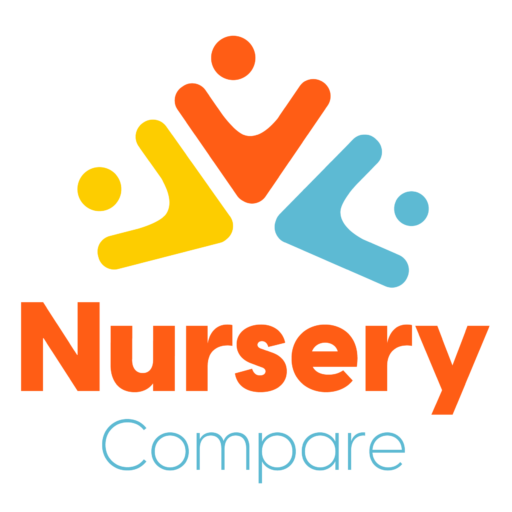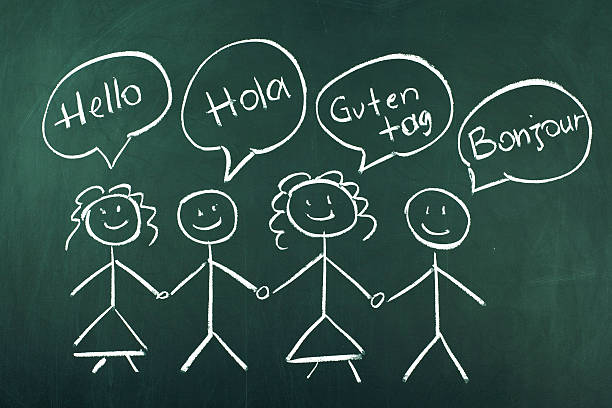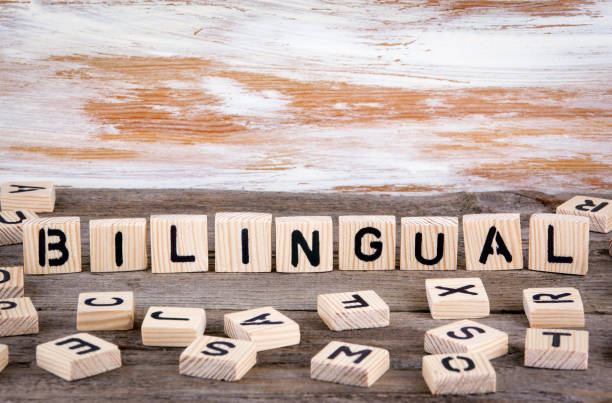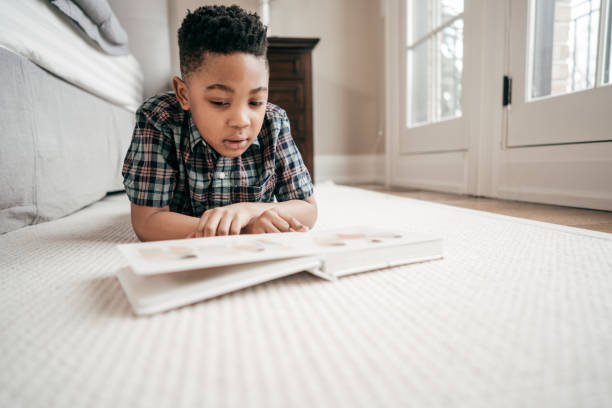
Bilingual Education in Early Childhood: Exploring the Benefits and Challenges

As a new parent, you’ve likely heard about the advantages of raising a bilingual child. You may also have questions or concerns about how bilingual education will affect your child’s development. That’s perfectly normal! Bilingual education is a rewarding journey, but like any parenting decision, it comes with its own set of challenges. In this article, we’ll explore both the benefits and the challenges of bilingual education in early childhood, offering practical advice along the way to help you make informed choices.
What is Bilingual Education?
Bilingual education refers to the practice of teaching children in two languages. This approach is often introduced in early childhood, during the critical years of language development, when a child’s brain is most receptive to learning new languages. While some parents raise their children to be bilingual at home, others enroll their children in formal bilingual education programs, which may use both the child’s native language and a second language in the classroom.
Why Consider Bilingual Education in Early Childhood?
Bilingual education offers a wealth of cognitive, social, and emotional benefits for children. But it’s important to weigh these benefits against potential challenges to ensure you’re making the best decision for your family. Let’s take a closer look at the key advantages and hurdles associated with bilingual education.
Benefits of Bilingual Education in Early Childhood
1. Enhanced Cognitive Development
One of the most significant benefits of bilingual education is the positive impact it has on cognitive development. Research shows that children who learn two languages at an early age often display improved problem-solving skills, better memory, and enhanced creativity. Bilingualism strengthens the brain’s ability to switch between tasks, leading to better multitasking skills and flexibility in thinking.
2. Improved Academic Performance
Bilingual children often excel in academic settings. Studies suggest that learning multiple languages helps children develop stronger reading and writing skills in both their native and second languages. This academic boost can also extend to other subjects like math and science, where bilingual students may outperform their monolingual peers.
3. Better Communication Skills
A child who grows up learning two languages naturally develops stronger communication skills. Bilingual children learn to express themselves in different ways, depending on the language and cultural context they are in. This adaptability helps them communicate more effectively with a wide range of people and in different settings.
4. Cultural Awareness and Sensitivity in Bilingual Education
Bilingual education exposes children to different cultures, helping them become more culturally aware and empathetic. They learn to appreciate the diversity of the world around them, which fosters a sense of open-mindedness and tolerance. These traits are invaluable as they grow older and interact with people from diverse backgrounds.
5. Increased Opportunities for Future Success
In today’s globalized world, bilingualism opens doors to numerous career opportunities. As your child grows, being proficient in two languages can give them a competitive edge in the job market. Whether they pursue careers in business, education, healthcare, or diplomacy, bilingual individuals are often highly sought after by employers.
6. Stronger Family Bonds
For families who speak more than one language, bilingual education can strengthen family ties. Children who learn the family’s native language can communicate more easily with grandparents, cousins, and extended family members, fostering closer relationships across generations.
7. Enhanced Social Skills
Bilingual children often display better social skills, as they learn to navigate multiple social contexts. They may be more empathetic and attuned to social cues, as they regularly switch between languages and cultures. This adaptability can help them build friendships and communicate more effectively with others.

Challenges of Bilingual Education in Early Childhood
1. Language Confusion and Delays
One common concern among parents is that exposing a child to two languages might cause confusion or language delays. While some bilingual children may mix languages or take a bit longer to reach certain language milestones, research shows that these delays are usually temporary. Over time, most bilingual children catch up to, or even surpass, their monolingual peers in language development.
Reminder: Patience is key! Your child may experience temporary confusion, but this is a normal part of the bilingual learning process.
2. Balancing Two Languages at Home
If one language is spoken at home and another is used in school, maintaining a balance between the two can be tricky. You may worry that your child is not getting enough exposure to both languages. To address this, try to create consistent opportunities for your child to use each language.
Checklist:
- Designate specific times for each language (e.g., mornings for one language, afternoons for another).
- Use media, like books and TV shows, in both languages.
- Encourage family members to communicate in the language they are most comfortable with.
3. Finding Qualified Teachers and Programs
Not all bilingual education programs are created equal. Finding a school or program with qualified teachers who are fluent in both languages and skilled in teaching young children can be challenging. Additionally, some areas may have limited access to bilingual programs, requiring you to do more research and planning.
Tip: Start by exploring local bilingual programs or preschools. Visit the schools, meet with teachers, and ask about their approach to language learning.
4. Social Pressures and Misunderstandings
In some cases, children in bilingual education programs may face social pressures or misunderstandings from peers or even adults who don’t understand the value of learning two languages. Some children may be teased for speaking a different language or feel self-conscious about their bilingualism.
As a parent, it’s important to reassure your child that being bilingual is a unique strength. Encourage them to be proud of their abilities and emphasize the benefits of speaking multiple languages.
5. Extra Effort from Parents
Raising a bilingual child requires additional effort from parents. You may need to spend extra time finding resources, coordinating with teachers, and reinforcing language learning at home. It’s essential to remain consistent and patient throughout the process.
Tip: Integrate language learning into daily activities. For example, label household items in both languages, or use bilingual flashcards during playtime.
Practical Tips for Parents Considering Bilingual Education
Now that we’ve covered the benefits and challenges, here are some practical tips to help you navigate bilingual education with confidence.
1. Start Early
The earlier you introduce bilingual education, the easier it will be for your child to absorb both languages. Research shows that young children have a remarkable ability to pick up new languages, so starting in infancy or toddlerhood can be highly beneficial.
2. Stay Consistent
Consistency is key when raising a bilingual child. Stick to a routine where both languages are spoken regularly. Whether it’s setting specific days for each language or speaking one language at home and another in school, consistency helps prevent confusion and reinforces learning.
3. Incorporate Fun Language Activities
Make language learning enjoyable by incorporating games, songs, and stories into your daily routine. Children learn best when they’re having fun, so don’t hesitate to get creative with activities that engage their curiosity.
Fun Activities to Try:
- Play bilingual board games or language apps.
- Read bilingual storybooks together.
- Sing songs in both languages during car rides.
4. Seek Community Support
Connect with other bilingual families in your community. Joining playgroups or attending cultural events where both languages are spoken can provide valuable social and linguistic reinforcement for your child. It also gives you the opportunity to share tips and experiences with other parents.
5. Be Patient and Encouraging
Language learning is a journey, and every child progresses at their own pace. Celebrate small victories, like your child’s first sentence in the second language, and offer positive reinforcement to keep them motivated. If your child struggles, remind them (and yourself) that it’s okay to make mistakes—learning two languages takes time.
Checklist for New Parents Exploring Bilingual Education
Here’s a quick checklist to help you feel prepared as you consider bilingual education for your child:
- Research bilingual education programs: Look into local schools, preschools, or daycare centers that offer bilingual education.
- Set language goals: Decide which languages you want your child to learn and how you’ll balance them at home.
- Create a language routine: Plan out specific times or activities for each language.
- Find resources: Look for books, toys, apps, and games that support bilingual learning.
- Stay patient: Remind yourself that language learning is a gradual process—trust that your child will get there!

To Sum Up: Embracing Bilingual Education with Confidence
Bilingual education in early childhood offers tremendous benefits, from cognitive growth to enhanced social skills. While there are some challenges, many of them can be managed with thoughtful planning, patience, and support. As you explore bilingual education for your child, remember that you’re giving them the gift of communication, cultural awareness, and a world of future opportunities.
So, take a deep breath, follow these tips, and enjoy the rewarding journey of raising a bilingual child. You’ve got this!
Read Our Latest Article: Technology in Nurseries: Essential Tools for Growth and Better Care